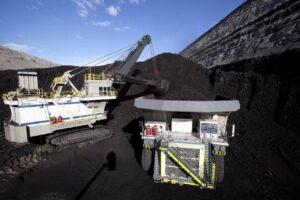
On January 20, on the steps of the U.S. Capitol in Washington, D.C., Donald Trump took the oath of office to become the 45th President of the United States. Minutes later, the Trump administration debuted its White House website, scrubbing any mention of climate change, renewable energy, or emissions goals.
Thirty minutes later, on the other side of the country, California went in a different direction, releasing its plan to cut carbon emissions 40 percent over 1990 levels by 2030 — the most ambitious goal, to date, in North America.
The plan — which was signed into law in September of 2016 — shows California is serious about moving forward with strong climate action, even in the face of an obstinate federal government.
“Climate change is impacting California now, and we need to continue to take bold and effective action to address it head on to protect and improve the quality of life in California,” Mary Nichols, chair of the California Air Resources Board, said in a statement.
“The plan will help us meet both our climate and our clean air goals in the coming decades and provide billions of dollars in investments to cut greenhouse gases, smog and toxic pollution in disadvantaged communities throughout the state. It is also designed to continue to drive creative innovation, generating good new jobs in the growing clean technology sector.”
According to the plan, California hopes to achieve deep carbon emissions reductions through a few different strategies: adding 4.2 million zero-emissions vehicles to the road, strengthening the state’s vehicle emissions standards, and reducing greenhouse gases 20 percent from the state’s refinery sector.
California already has the most electric vehicle options in the country, according to the Union of Concerned Scientists, a trend that will likely continue under this new plan. Cities like Los Angeles are already pushing the state towards deploying more and more electric vehicles — all new non-patrol police cars purchased in the city of Los Angeles last year were electric vehicles, a move that cut emissions and helped the city save 60 percent on vehicle maintenance.
California’s ambitious plan stands in stark contrast to the future of federal climate policy under a Trump administration. President Trump rejects the scientific consensus on climate change, calling it a “hoax” created by the Chinese. He has also promised to significantly roll back environmental regulations, and his administration motioned towards weakening auto emissions standards.
California Gov. Jerry Brown (D) has been a vocal critic of Trump’s policies, including his stance on climate change. In a speech in December, Brown pledged to continue California’s environmental progress, even if Trump chooses to cut funding for federal climate programs or climate research.
“We’ve got the scientists, we’ve got the lawyers, and we’re ready to fight,” Brown said at the American Geophysical Union Conference in San Francisco. “Whatever Washington thinks they are doing, California is the future.”
California state policy has already been driving federal environmental policy for decades. Under the Clean Air Act, California is granted a fair amount of leeway in setting more stringent auto emissions standards than the national average — a precedent dating back to the fact that California was regulating air pollution at a state level before the EPA was established as a federal agency. But for California to be able to enact their own statewide emissions limits, the EPA must grant a waiver. The EPA has only refused to grant California’s waiver once, under President George W. Bush.
That could change under a Trump administration , however— Trump’s nominee for EPA administrator, Scott Pruitt, refused to tell Democratic lawmakers during his confirmation hearing whether he would uphold California’s waiver as EPA chief.
“It’s troublesome, because obviously what we have heard all day is how much you support states’ rights when it comes to these issues,” Sen. Ed Markey (D-MA) said during an exchange with Pruitt during the hearing. “But now when it comes to the right of California or Massachusetts and other states to be able to reduce carbon pollution, you’re saying you are going to review that.”
Pruitt — who built his career as Oklahoma Attorney General on a platform of federalism and state’s rights — did not explain why the California waiver did not qualify as a question of state’s rights during the hearing.
California politicians — both local and national — pledged to fight any attempts by the federal government to preempt local environmental policies. In a meeting with reporters the day before the inauguration, Los Angeles Mayor Eric Garcetti said that he would “strongly fight” against any attempts to rollback California’s independence, arguing that California’s progressive policies have been beneficial to both the state and the country as a whole.
“I think it would be not only bad for California but bad for the nation,” Garcetti said. “If we’re settling for being average, I don’t see that this country will have much progress.”
Source: Think Progress. Reproduced with permission.








